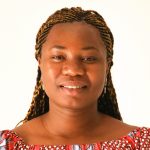Democratization And Political Advancement Of Women In Cameroon: The Case Of Parliament And The Decentralized Territorial Authorities Executives
The construction of parity democracy is undoubtedly one of the greatest challenges of contemporary societies. This ideal makes full sense in Africa because, “having accepted the Western style of government, it must accept the structures that are its corollary (…)”[1] as well as the values conveyed in the “world system”[2] to which it now belongs. According to former US Secretary of State Hilary Clinton, “When women have rights, equal opportunities in education, health, employment, and political participation, they invest in their families, they contribute to their families’ future, to the future of the community and the future of their country. When they are marginalized, mistreated, ignored, diminished, then progress is impossible no matter how wealthy and educated the elite are.”[3]
In 1990, Cameroon experienced a paradigmatic shift that introduced a new form of ‘governmentality,’ understood by Michel FOUCAULT “as a set of institutions, procedures, analyses, and reflections, albeit power complex, which targets the population.”[4] The profound meaning of this change lay in need for ethnic minorities and social categories, including women and children, disadvantaged groups, who do not always have the freedom and means to protect themselves against arbitrary action, to make their voices heard to influence the decisions that affect their lives.[5] This interest in the world of the “dominated,”[6] of the “bottom,”[7] has led Cameroon to undertake corrective actions with regard to the political situation of women.[8]
Indeed, several factors explain the political under-representation of women. In addition to structural factors that reduce women’s political participation, socio-cultural and individual factors should be considered: the weight of culture and religion, lack of interest in politics, lack of financial and material means, lack of time, and lack of female solidarity. An analysis of women’s representativeness shows that they are poorly represented in public institutions, despite the adoption by Cameroon of texts and institutions for women’s political advancement (I). This can be seen from the analysis of the limited representation of women in Parliament and in the executives of decentralized territorial authorities (II). Specific recommendations are to be considered for the effective political advancement of women (III).
I. The Legal and Institutional Bases of Women’s Political Advancement in Cameroon
From a legal point of view, Cameroon has ratified a set of international conventions and adopted, at the national level, a set of texts relating to the advancement and political representation of women. Thus, at the international level, the country has ratified the Universal Declaration of Human Rights (1948), the Convention on the Political Rights of Women (1972), the International Covenant on Civil and Political Rights (1966), the International Covenant on Economic, Social and Cultural Rights (1966), the African Charter on Human and Peoples’ Rights and its additional protocol on women’s.[9] In addition, Cameroon took part in the Fourth United Nations World Conference on Women in Beijing (1995), whose objective was to advocate for the empowerment of women in all sectors.
At the national level, the Constitution of January 18, 1996, is the normative basis par excellence for the political advancement of women insofar as it has internalized and included in the constitutionality block all the international conventions relating to women’s rights. To echo this, the Electoral Code adopted on April 19, 2012, and amended on April 15, 2019, provides Article 151(3) that “the Constitution of each list must take into account the different sociological components. It must also take into account gender.” With this provision, the legislator wanted to increase the chances of women’s representation in the electoral lists presented by political parties.
At the institutional level, a Ministry of Women Empowerment and the Family (MINPROFF) has been created and is headed by a woman. Under the impetus of this ministry, several strategic instruments, including the National Gender Policy (2011-2020) and the Multi-sectoral Action Plan for implementing the National Gender Policy (2016-2020), were adopted. They were considered as the national charters for the promotion of gender equality in all areas. In addition, there are women at the head of various ministries,[10] State Universities,[11] and in the territorial command, although they are still under-represented.[12] However, a careful analysis shows that the representation of women at these different levels of decision-making remains limited. This is also the case in Parliament and in the executives of decentralized territorial authorities.
II. Limited Political Representation of Women in Parliament and the Executives of the CTD
With the renewal of decentralization marked by the adoption of the General Code of the CTD on December 24, 2019, and the establishment of the regions in January 2021, women thought they would obtain room for maneuver for better representation in the political field. This has not been the case. Although the representation of women in Parliament has gradually evolved, it remains limited. To be convinced of this, one only has to look at the figures relating to the evolution of their representation in both the National Assembly and the Senate.
In 1992, out of 180 deputies in the National Assembly, 23 were women. This figure dropped considerably after the 1997 legislative elections when there were 10 women deputies. In 2002, there were 20 women deputies in the lower house, and in 2007 there were 25. In 2013, women reached the critical mass of 30% with 56 seats in the National Assembly, and since the last legislature in 2020, there are 61 women, about 33.8% deputies. At the Senate level, the representation of women has changed slightly in two terms: 21 women senators out of 100 in 2013 and 26 women senators in 2020.
Although it is progressive, the representation of women at the level of the CTD is still limited, with less than 10% of women mayors. In 1994, only one woman was mayor out of 175 rural and urban municipalities; in 1996, out of 330 municipalities, 02 women were mayors; in 2002, there were 10 women mayors out of 337 mayors, and in 2007, 23 women mayors out of 360 mayors. In the dual municipal and legislative elections of September 30, 2013, 31 women were elected as mayors, and in 2020 there will be 35 women mayors in 360 municipalities. Following the establishment of regional executives in December 2020, it is clear that out of 10 regions, no woman has been elected as head of a regional executive.[13] This general trend shows the capacity of the Cameroon political field to “resist societal pressures”[14] for a better consideration of women in decision-making bodies.
III. Recommendations for a Better Consideration of Women in Political Bodies
To optimize better participation and representation of women in political bodies in Cameroon, several initiatives should be undertaken at the level of the State, political parties, women’s civil society, and families.
At the Level of the State:
- Establish legal quotas in the Constitution of the order of 50% of women’s representation
- Establish parity in parliament and local institutions by setting up a political coloring system called the “zebra system,” in which each political party is obliged to present a list with an equal number of male and female candidates. This system has produced spectacular results in Mozambique and Namibia
- Create a National Observatory of Parity specifically charged with monitoring the equal representation of men and women in power
- The President of the Republic should set an example to other institutions by appointing as many women as men to the posts of ministers, governors, prefects, and sub-prefects
At the Level of Political Parties:
- Political parties must adopt ambitious voluntary quotas of 50% women instead of the current 20% and 30% and introduce them in their internal texts so that they are always applied
- Train, subsidize, and position women candidates who stand out for their activism and intellect
- Tackle gender stereotypes in committees and elect women as party chairs
At the Community Level:
- Families need to educate the girl child without social and religious prejudice
- And finally, women themselves must make themselves more available and improve both their social and economic capital
Conclusion
In conclusion, the objective of this analysis was to study the degree of openness of Cameroon’s democratic institutions, particularly the Parliament, the municipalities, and the regions, to the contemporary issue of gender. Despite the existence of numerous texts and a slight increase in women’s representation in political bodies, it appears that practice consolidates social prejudices that keep women in a position of the “weaker sex” and a perpetual struggle for affirmation.
References
[1]See B. MUNA: Discours du bâtonnier de l’ordre des avocats du Cameroun, Douala 27 mars 1990, (reproduit in la Gazette 637,12.4.90), p. 12.
[2]J. NJOYA, « Mondialisation et insertion internationale de l’Afrique : l’anthropologie d’une dynamique récusée », in Verfassung und in Ubersee Vru, 2010, 43 (4), pp. 482-505.
[3]H. CLINTON, Nations-Unies, 30 Septembre 2009.
[4]M. FOUCAULT, cité par L. SINDJOUN et M. E. OWONA NGUINI, « Egalité oblige ! Sens et puissance dans les politiques de la femme et les régimes de genre », in L. SINDJOUN (dir.), La biographie sociale du sexe, Paris, Editions Karthala et Codesria, 2000, pp. 13-77.
[5]I. MOUICHE, Démocratisation et intégration sociopolitique des minorités ethniques au Cameroun : Entre dogmatisme du principe majoritaire et centralité des partis politiques, Dakar, CODESRIA, 2012, chapitre 1.
[6]Idem.
[7]Idem.
[8]In line with the UN’s call for a minimum of 30% representation of women in decision-making bodies.
[9]NGOMO (Angéline-Florence), « La ratification par le Cameroun du Protocole à la Charte africaine des droits de l’homme et des peuples relatif aux droits des femmes », RJPEF, n°2, 2013, pp. 215-243.
[10]The Ministry of Social Affairs, the Ministry of Scientific Research and Innovation, the Ministry of Secondary Education, the Ministry of Housing and Urban Development and the Ministry of Posts and Telecommunications.
[11]The University of Ngaoundéré (Uphie Chinje Melo) and the University of Bamenda (Theresa Nkuo-Akenji).
[12]Two women prefects in 58 divisions and eight sub-prefects in 360 sub-divisions.
[13]https://www.lebledparle.com/fr/les-chroniques-du-bled/1117725-tribune-l-exclusion-des-femmes-des-sommets-regionaux-en-2020-l-opprobre-republicain, visited on March 2, 2021.
[14]I. MOUICHE, « Genre et asymétrie structurelle du pouvoir d’Etat : quelles leçons pour le Cameroun ? », op.cit., p. 147.












